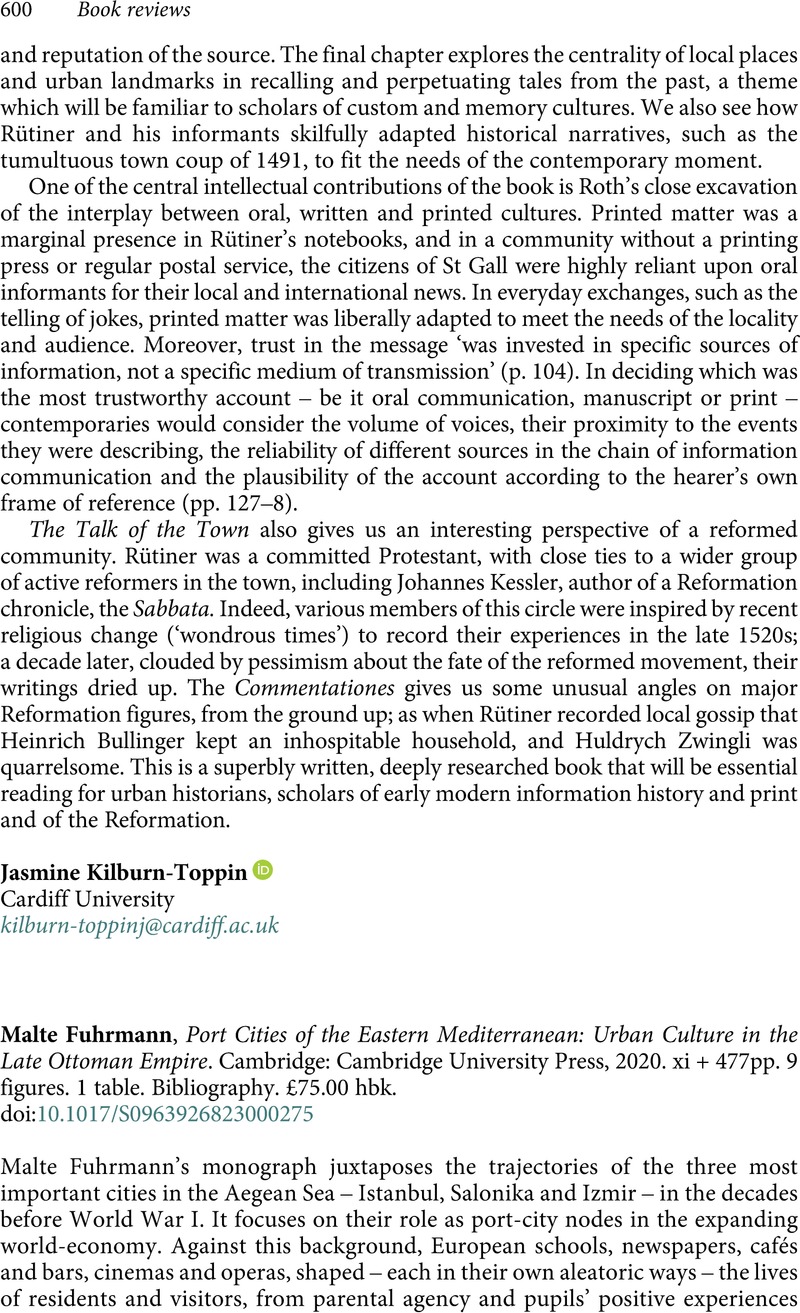No CrossRef data available.
Article contents
Malte Fuhrmann, Port Cities of the Eastern Mediterranean: Urban Culture in the Late Ottoman Empire. Cambridge: Cambridge University Press, 2020. xi + 477pp. 9 figures. 1 table. Bibliography. £75.00 hbk.
Review products
Malte Fuhrmann, Port Cities of the Eastern Mediterranean: Urban Culture in the Late Ottoman Empire. Cambridge: Cambridge University Press, 2020. xi + 477pp. 9 figures. 1 table. Bibliography. £75.00 hbk.
Published online by Cambridge University Press: 20 October 2023
Abstract
An abstract is not available for this content so a preview has been provided. Please use the Get access link above for information on how to access this content.

- Type
- Book Review
- Information
- Copyright
- © The Author(s), 2023. Published by Cambridge University Press



